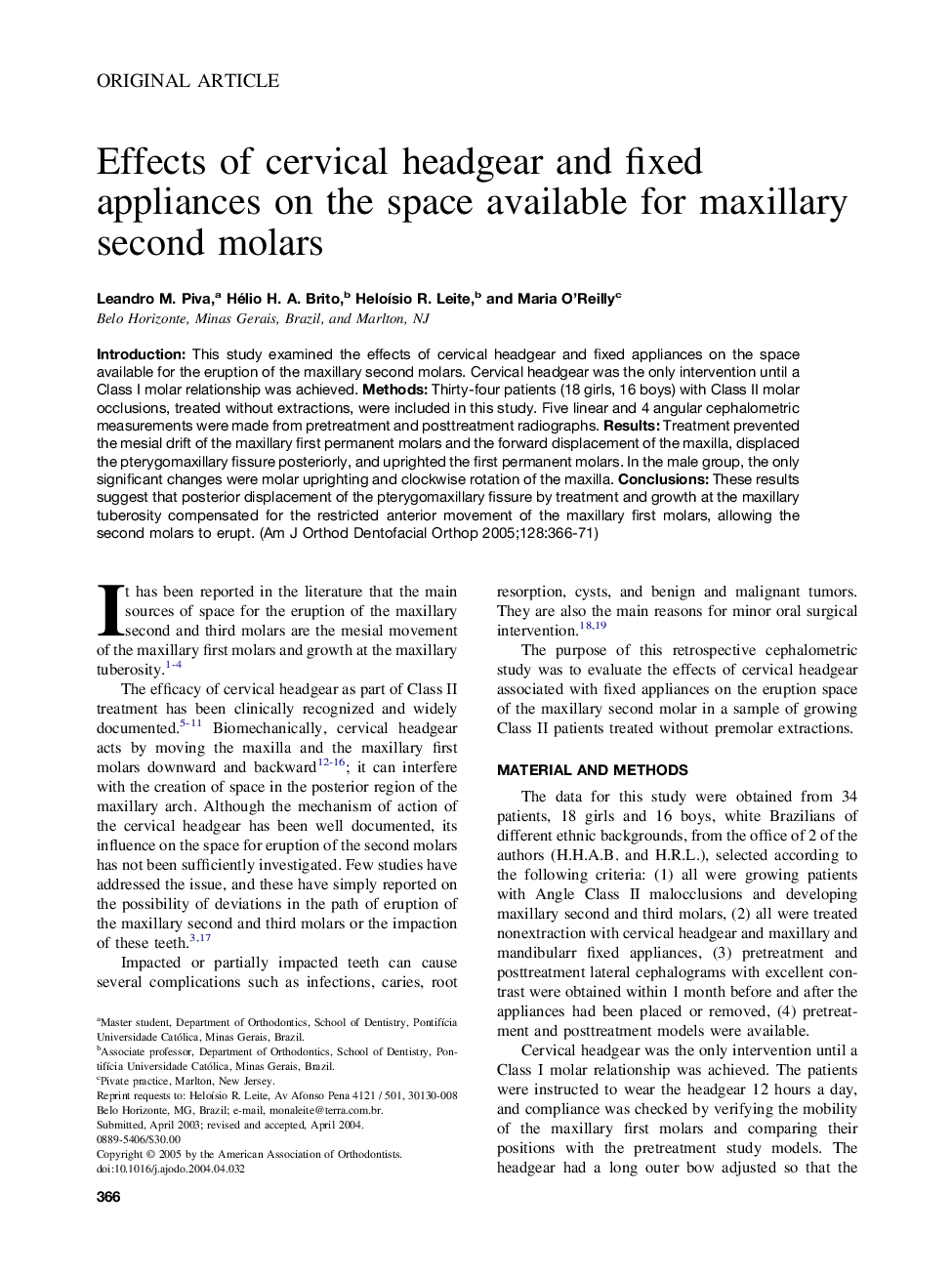| Article ID | Journal | Published Year | Pages | File Type |
|---|---|---|---|---|
| 9992675 | American Journal of Orthodontics and Dentofacial Orthopedics | 2005 | 6 Pages |
Abstract
Introduction: This study examined the effects of cervical headgear and fixed appliances on the space available for the eruption of the maxillary second molars. Cervical headgear was the only intervention until a Class I molar relationship was achieved. Methods: Thirty-four patients (18 girls, 16 boys) with Class II molar occlusions, treated without extractions, were included in this study. Five linear and 4 angular cephalometric measurements were made from pretreatment and posttreatment radiographs. Results: Treatment prevented the mesial drift of the maxillary first permanent molars and the forward displacement of the maxilla, displaced the pterygomaxillary fissure posteriorly, and uprighted the first permanent molars. In the male group, the only significant changes were molar uprighting and clockwise rotation of the maxilla. Conclusions: These results suggest that posterior displacement of the pterygomaxillary fissure by treatment and growth at the maxillary tuberosity compensated for the restricted anterior movement of the maxillary first molars, allowing the second molars to erupt.
Related Topics
Health Sciences
Medicine and Dentistry
Dentistry, Oral Surgery and Medicine
Authors
Leandro M. Piva, Hélio H.A. Brito, HeloÃsio R. Leite, Maria O'Reilly,
